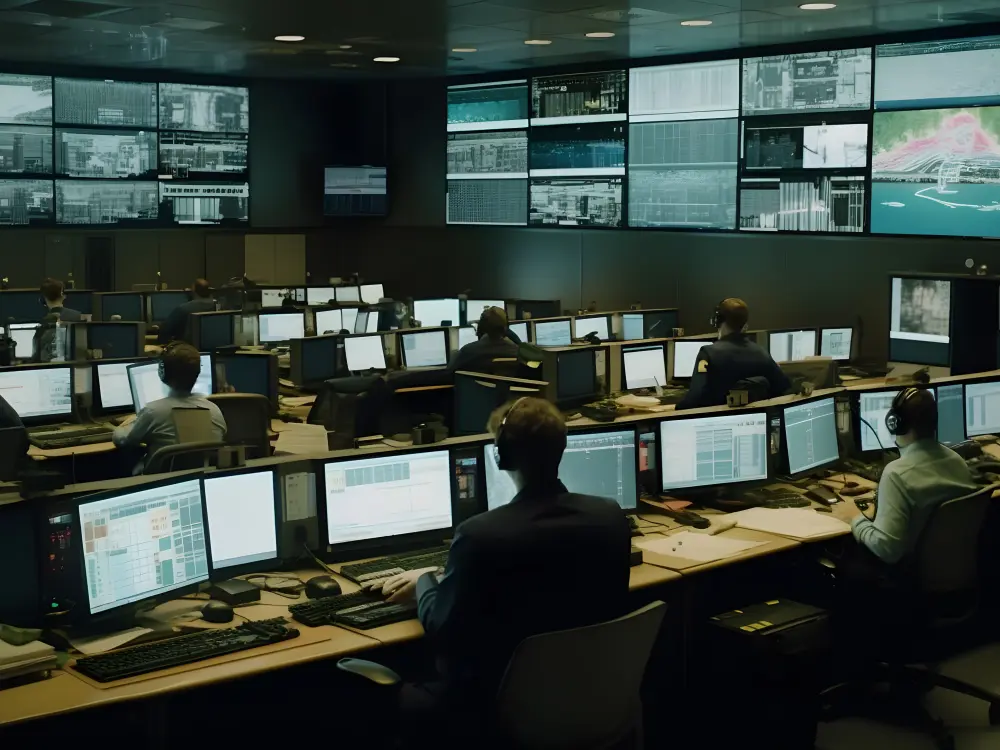In today’s unpredictable world, effective crisis management is critical for organizations to respond swiftly and efficiently. Command centers act as the central hub for managing emergencies, and having reliable systems in place can make all the difference. AVCiT Systems, implemented by Israk Solutions, provide cutting-edge features that transform command centers into high-performance crisis management hubs.
This blog explores 7 ways AVCiT Systems enhance crisis management, enabling organizations to stay prepared and responsive during emergencies.
1. Real-Time Incident Monitoring
During crises, real-time monitoring is vital for assessing the situation and making informed decisions. Delays in information flow can exacerbate the problem. AVCiT Feature: AVCiT’s ultra-HD video walls provide operators with a comprehensive and clear view of ongoing incidents. Real-time dashboards display all critical data, enabling operators to track developments instantly. Benefits:- Quick identification of critical issues.
- Enhanced situational awareness.
- Immediate action based on live data.
2. Seamless Communication Across Teams
Effective communication is the backbone of successful crisis management. Gaps in communication can lead to confusion and delayed responses. AVCiT Feature: AVCiT’s collaboration tools ensure seamless communication between teams, departments, and stakeholders. Operators can share information in real time, facilitating synchronized responses. Advantages:- Unified communication platforms.
- Faster coordination during emergencies.
- Reduced communication barriers.
3. Centralized Control for Rapid Decisions
In high-pressure situations, operators often deal with multiple systems, which can slow down decision-making. AVCiT Feature: AVCiT’s IP-based KVM technology centralizes control, allowing operators to manage multiple systems from a single interface. This reduces complexity and improves operational efficiency. Key Benefits:- Faster decision-making processes.
- Simplified workflows for operators.
- Reduced risk of human error.
4. Advanced Data Visualization
Data overload can hinder crisis management efforts. Operators need tools that present information clearly and concisely. AVCiT Feature: AVCiT’s customizable layouts and advanced data visualization tools help operators prioritize essential information, ensuring nothing critical is overlooked. Key Features:- Customized views for different scenarios.
- Simplified data presentation for quick understanding.
- Improved focus on key metrics.
5. High-Level Security to Protect Sensitive Data
Crisis management often involves handling sensitive and confidential information, which must be protected from unauthorized access. AVCiT Feature: AVCiT’s robust security features, including encrypted communication and role-based access control, safeguard critical data and operations. Security Highlights:- Prevention of data breaches.
- Controlled access for authorized personnel.
- Compliance with security regulations.
6. Scalability to Handle Expanding Crises
Crisis scenarios can evolve quickly, requiring systems that can adapt and scale to handle increased demands. AVCiT Feature: AVCiT’s modular design allows command centers to scale up their capabilities during emergencies without disrupting ongoing operations. Benefits:- Quick adaptability to changing needs.
- Cost-effective system expansions.
- Future-proof technology for evolving crises.
7. User-Friendly Interfaces for Stress-Free Operations
High-pressure situations demand systems that are easy to navigate. Complicated interfaces can hinder productivity during critical moments. AVCiT Feature: AVCiT’s intuitive user interfaces reduce the learning curve for operators and improve efficiency in high-stress scenarios. Key Features:- Easy-to-use controls.
- Reduced training time for new staff.
- Enhanced operator productivity.









